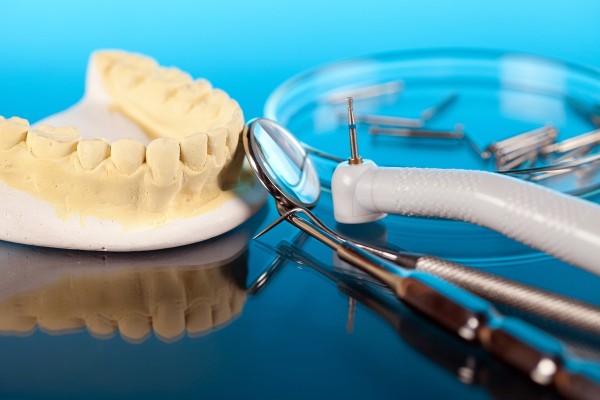Early Dentistry
Throughout history, people have been beautifying their teeth. The Etruscans wore dentures nearly 2,700 years ago. They made them from the teeth of dead animals, dead humans or live human donors. People started using gold in dental crowns and bridges around 200 A.D. The Egyptians of that era used teeth made from seashells, which they hammered into the bone just beneath the gums.
Europeans of the 13th century filed teeth to make them even and bleached them with acid that eroded the enamel. The 15th century brought dentures made from bone and ivory, but they were very uncomfortable, and by the 18th century, people started using human teeth again. Unfortunately, the teeth were not sturdy, and they rotted too quickly. Some folks tried metal without much success.
Advancements in the 18th and 19th Centuries
Swift development of dental technologies came in the 18th century. Pierre Fouchard invented the bandeau, a horseshoe-shaped metal strip with spaced holes that fit around a patient’s teeth to realign them, and Alexis Duchateau made the first porcelain dentures in 1770. By the early 1800s, they were popular in both Europe and the United States.
It was in this period that dentists started using plaster molds of teeth to improve the fit of their products. In 1820, a goldsmith named Samuel Stockton mounted porcelain dentures on 18 karat gold plates and improved their quality tremendously.
The First Dental Labs
In the 1840s, The Dental Art by Chapin A. Harris was the first widely read book about dentistry, and the first dental lab was established in the 1850s. Dental technologies really took off after Edward Hartley Angle uncovered the properties of misalignment and set about in 1880 developing orthodontic appliances with ever-increasing success.
Crowns Become Comfortable
Dental labs developed acrylics and plastics to use in dentures during the first half of the 20th century, but it was in the 1950s that metal was fused beneath the porcelain to make crowns more durable and comfortable. Soon afterward, they became popular.
Dental Implants
The first dental implant was used in 1937. It was a screw-in style device, but titanium had not yet been discovered. That happened in 1952, and it was in 1965 that its use became the standard in dental implants. Titanium is exceptionally compatible with human bone and results in a safe and very long-lasting fusion.
Rapid Expansion in the Late 20th Century
The term “cosmetic dentistry” surfaced in the 1990s, which was a period of swift advancement in the field. The laser had previously been used to treat gum disease, but it was approved for tooth whitening in 1996. Composite fillings became popular after the technique of curing them with light was implemented in the 1980s. High-tech materials were developed that made dental veneers durable, and advances in dental implants made them commonplace.
The 21st Century
Visible metal is becoming a thing of the past as metal crowns make way for all-ceramic designs. Developments in ceramic materials have significantly improved their ability to bond to teeth.
As doctors specialize and the materials become stronger and thinner, dental procedures are continually becoming less invasive. Techniques and equipment have advanced tremendously in the last ten years, and dentists are placing more emphasis on excellence in service delivery.
The professionals at Good Samaritan Dental Implant Institute in West Palm Beach, Florida, are carefully trained in the latest technologies to produce beautiful, long-lasting results in a comfortable setting.


